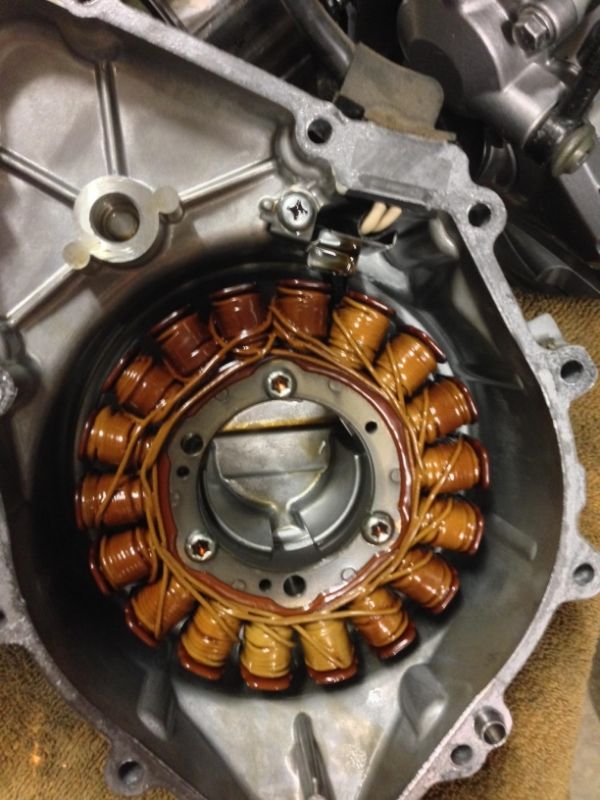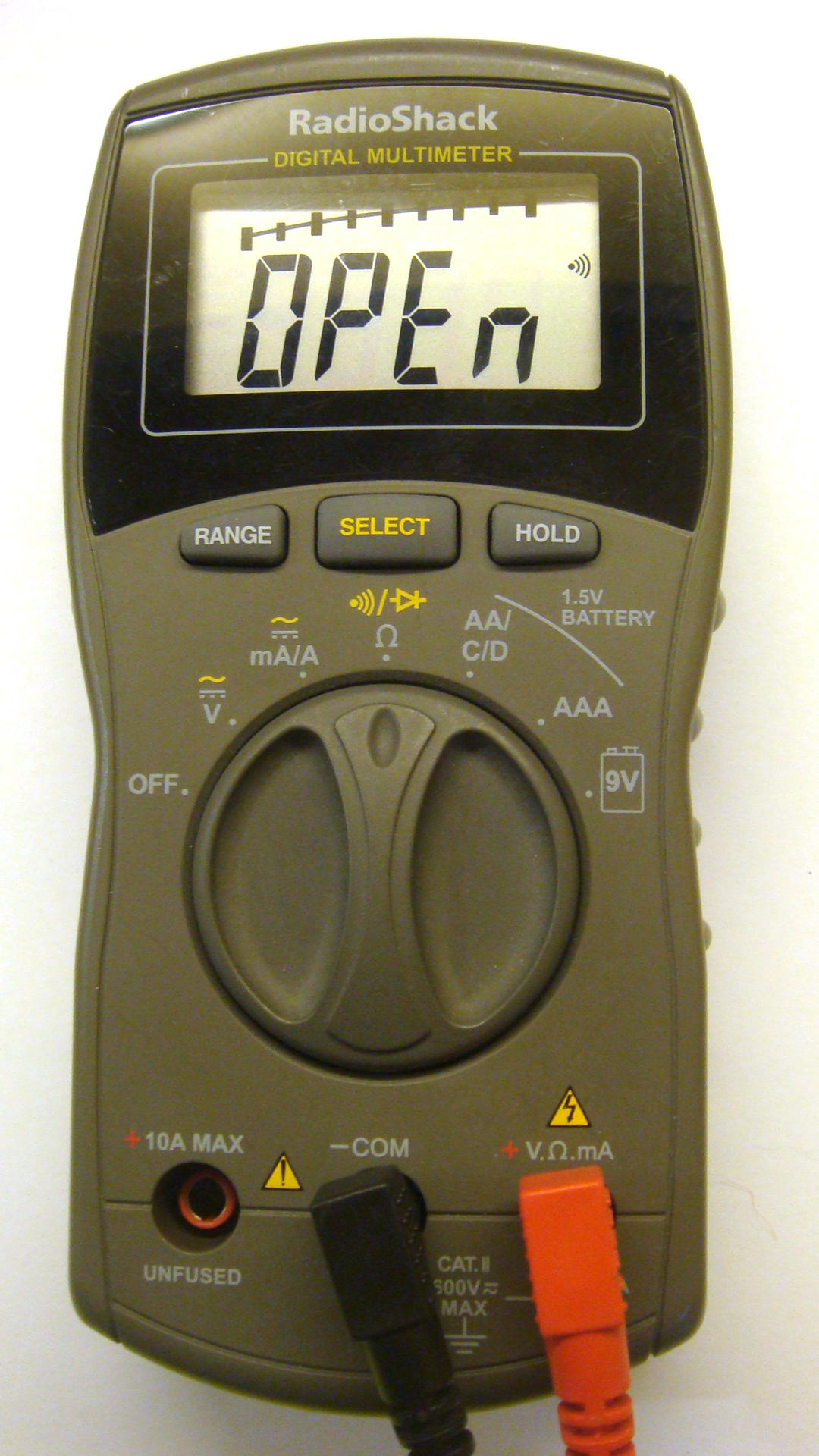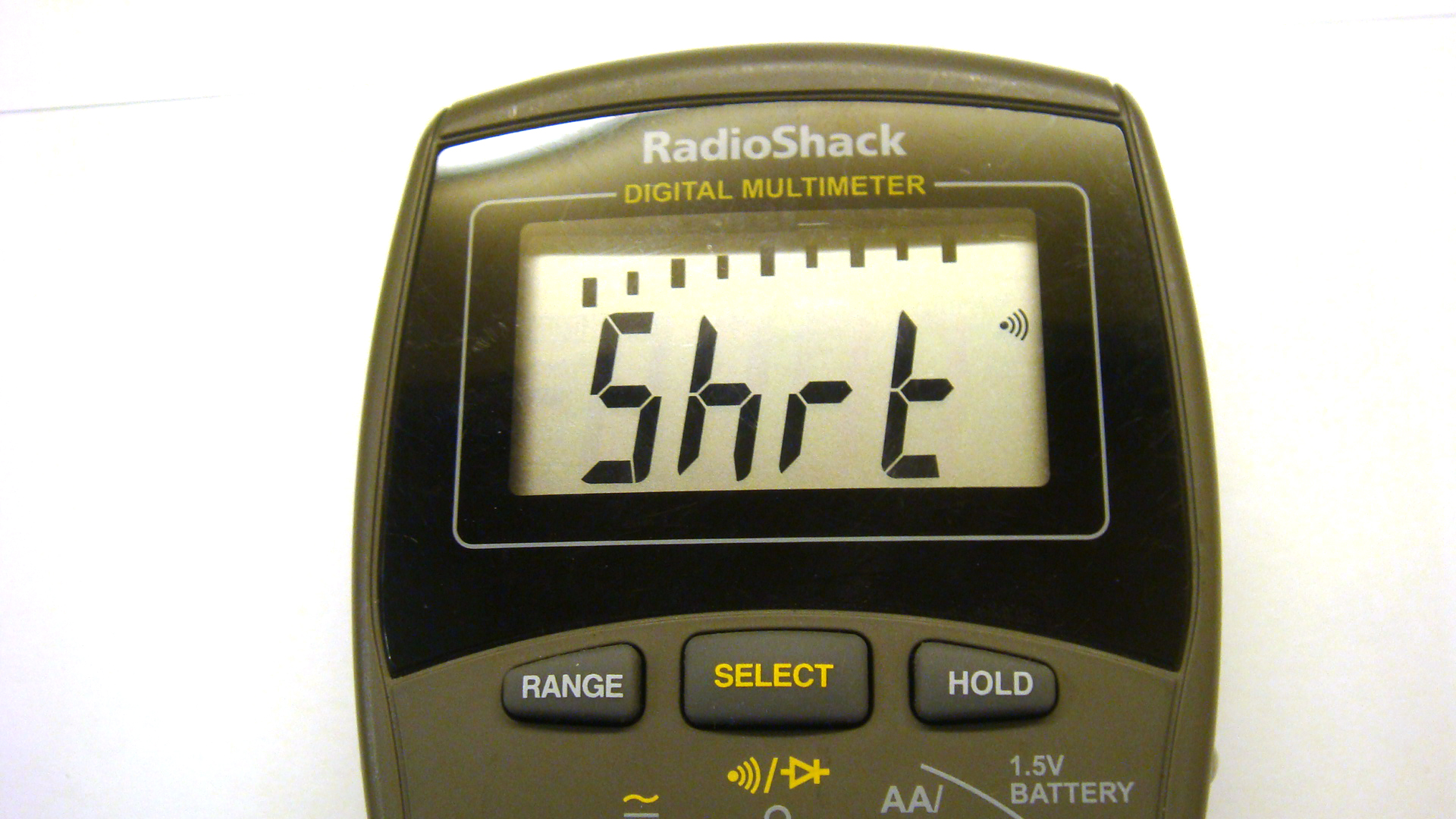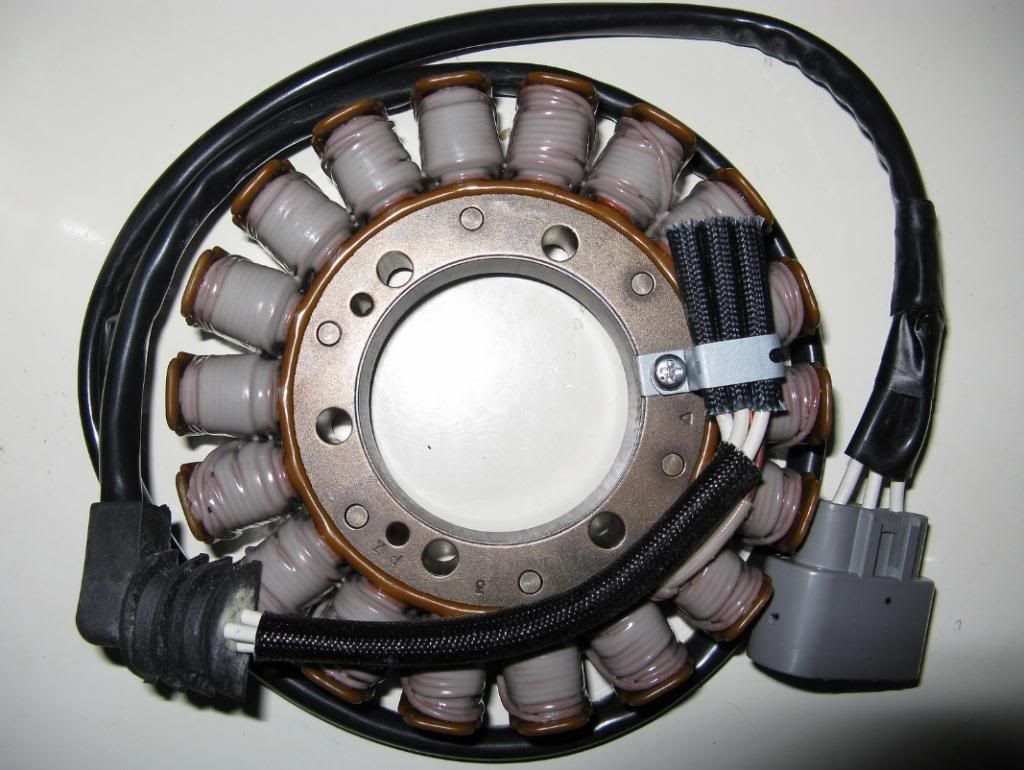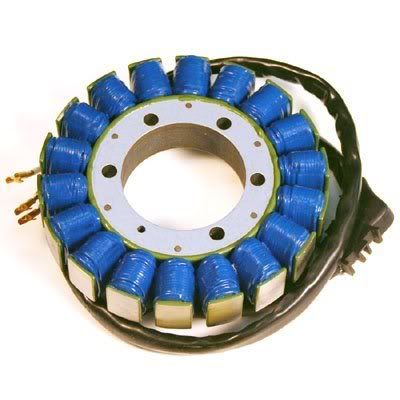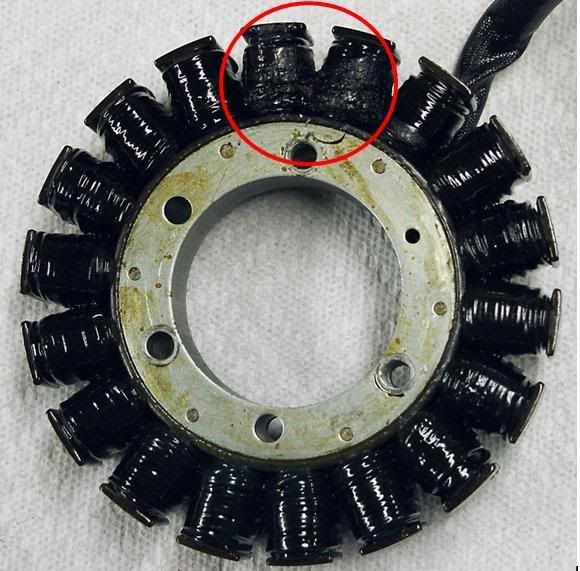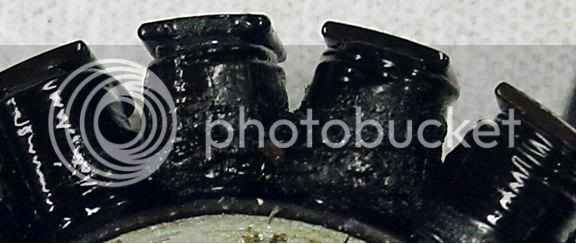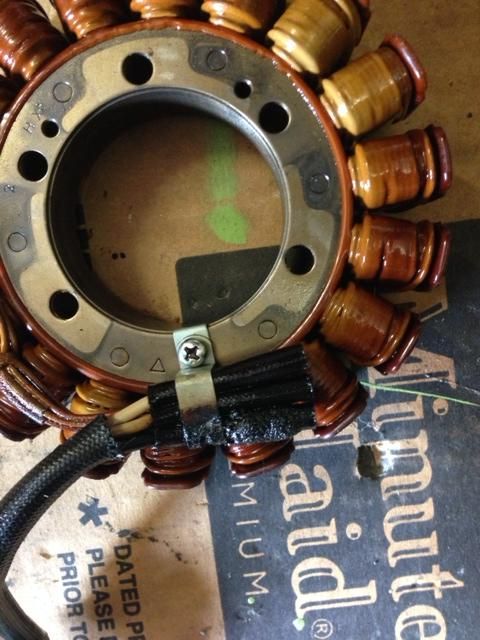mcatrophy
Privileged to ride a 2018 FJR1300AS
You have a problem if you do measure 1 ohm to ground on any/all of the stator wires, they should not have any connection to ground.OK, I think I got somewhat of what you were saying ionbeam. So I pulled up a video about checking the stator and rectifier and there was one test I didn't do, because the SM didn't mention it; I hadn't checked the stator wiring to ground to see if there was any shorts. Setting the multimeter at 200ohm, all the three white wires show a value of 1 when checking to ground. The ohms checking between the three A,B,C phases are equal at .9ohm. The voltage at the white wires all go up to around 80v when revving the engine.... But is all that possible to get the right numbers but it show shorts in all three wires? Or am I just not checking things right?
All three are connected together internally, so if one shows a connection to ground, all three will. It's difficult to make accurate resistance measurement at sub-one ohm values, but it is curious that all three measure the same.
Most likely is where the wires pass through the casing, but I'd expect one of the three wires to read a lower value to ground than the other two.
It does look as if an internal inspection is required, it's not difficult to remove the stator cover.




